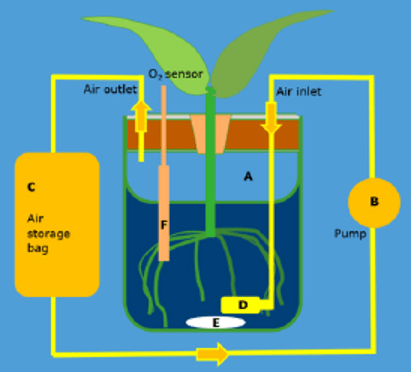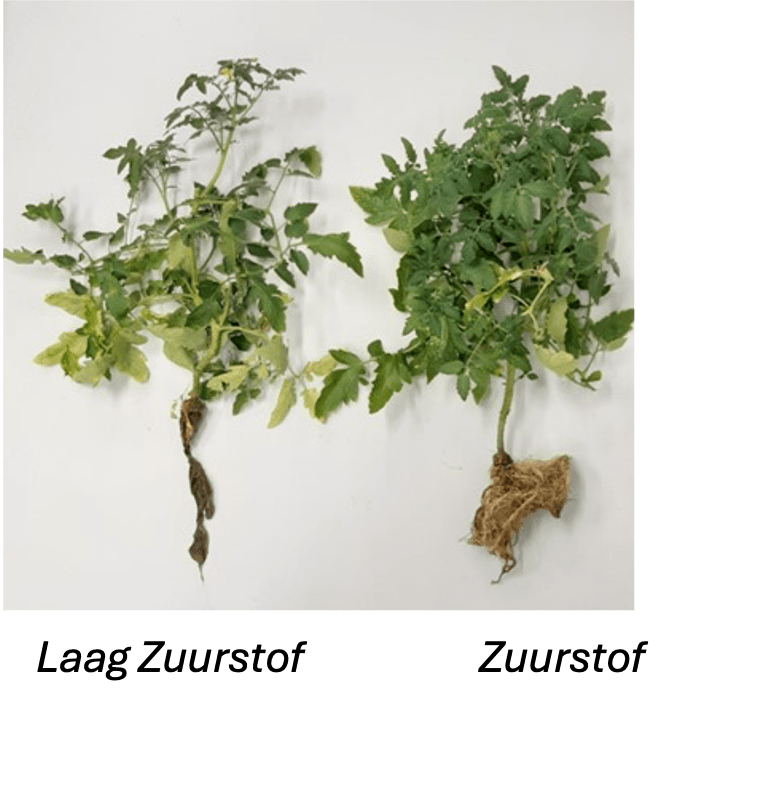Revelations about root oxygen consumption thanks to Sendot sensors
Chris Blok and his team from Wageningen UR have determined how much oxygen the roots consume when the composition of the nutrient solution is varied*. The experimental setup used is almost genius in its simplicity (Fig. 1). The results of these measurements are groundbreaking because these values have never been so directly measured before. The tests were conducted with tomatoes, peppers, and cucumbers. The measurements were carried out using the Sendot oxygen sensor, which also measures the temperature in the root environment.

Summarized: In a standard nutrient solution for tomatoes, there is 16 mM nitrate. When nitrate is reduced by half, additional anions need to be added to maintain the proper EC. The roots consume 12% less oxygen when extra chloride is used and 20% more oxygen when extra sulfate is used. Therefore, the difference in oxygen consumption between chloride and sulfate is over 30%.
For a more generative nutrient solution, it is therefore preferable, as much as possible, to use extra chloride rather than extra sulfate. The implications of this observation are multiple. Firstly, the energy consumption for uptake will differ by 30%, which impacts growth vigor! Secondly, the oxygen level in the root zone is often limited. Since chloride consumes less oxygen, the roots will remain active in nutrient uptake for a longer period. Thirdly, roots with higher oxygen levels are more resilient (Fig. 2).

Active roots require oxygen; low oxygen concentrations lead to reduced uptake of nutrients and water, and lower resilience. For thorough research, it is essential to always measure the oxygen levels in the root environment. The Sendot sensor can be used not only in research but also in practical applications. The same principle applies in practice!
None of this publication may be reproduced in any form without the written permission of Sendot Research.